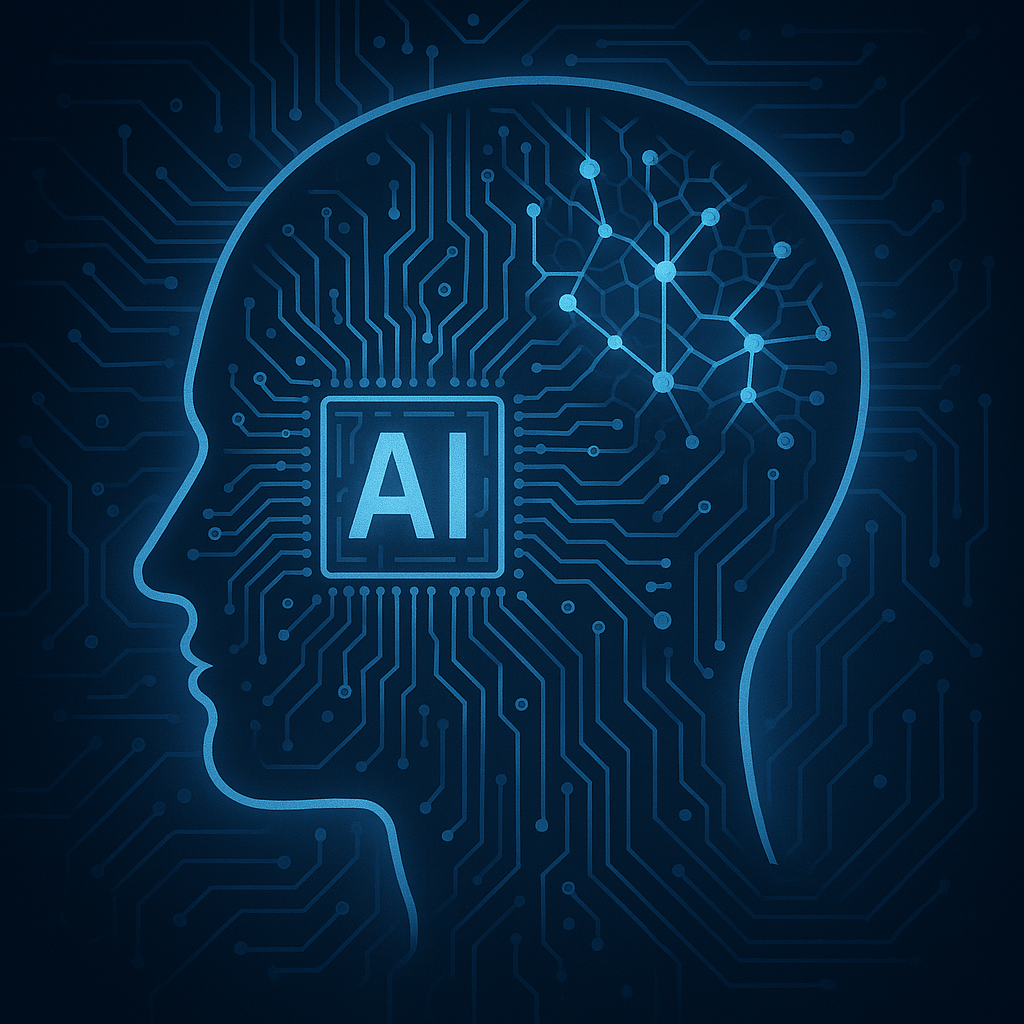by Elias Varen
Introduction
Artificial Intelligence has emerged from the margins of science fiction into the very core of human progress. It’s now writing code, diagnosing diseases, generating art, and conversing in human-like ways. But how does it actually work? What are the mathematical engines driving this revolution? And as we cross the threshold into an AI-shaped era, where might it lead us?
To understand the present and future of AI, we must first explore its foundational systems—particularly large language models and Bayesian statistical methods, two essential pillars that illustrate how machines can emulate aspects of human reasoning and language.
Large Language Models: Prediction Machines at Scale
Large Language Models (LLMs) like OpenAI’s GPT series operate on a deceptively simple premise: predict the next word. Trained on massive datasets spanning books, websites, articles, and conversations, these models learn patterns, relationships, and contextual signals from human language.
At their core, LLMs rely on a type of neural network architecture called the Transformer, introduced in a 2017 paper titled “Attention Is All You Need.” This architecture changed everything. It allowed models to attend selectively to relevant words and ideas in a sequence—giving them the capacity to understand not just isolated meanings, but nuanced, contextual relationships.
How It Works:
- Tokenization: Text is broken down into tokens—small chunks of words or characters.
- Embeddings: These tokens are converted into numerical vectors that capture their meaning and context.
- Attention Mechanism: The model evaluates which tokens are most relevant to each other using a process called self-attention, enabling it to “focus” on the right words while predicting the next.
- Training: Billions (or trillions) of weights are adjusted through backpropagation as the model attempts to minimize prediction error across vast corpora of text.
- Inference: Once trained, the model generates responses by calculating the most likely next token in a sequence, step by step.
LLMs are not sentient or truly “understanding” language. Rather, they are sophisticated statistical models generating text based on learned patterns. Yet, the illusion of intelligence they create is profound—raising philosophical, social, and ethical questions that humanity is only beginning to confront.
Bayesian Statistics: AI’s Probabilistic Roots
While large language models dominate headlines, another powerful foundation of AI lies in Bayesian statistics—a mathematical framework that allows machines to reason under uncertainty.
Bayesian methods are not new. They date back to the 18th century, based on Bayes’ Theorem, which provides a way to update probabilities as new evidence is encountered. This is central to how humans—and intelligent machines—learn from experience.
How Bayesian AI Works:
- Prior Belief: Begin with an initial assumption or probability about a state of the world (the prior).
- Evidence Collection: New data is observed.
- Belief Update: Using Bayes’ Rule, the model updates its beliefs (the posterior) based on how likely the new data would be if the prior were true.
Bayesian models are used in everything from spam detection and recommendation systems to autonomous navigation and robotics. They are particularly useful when data is sparse or noisy, and decisions must be made with incomplete information.
In many cutting-edge AI applications, Bayesian inference is being used alongside deep learning to build more robust, interpretable, and adaptive systems—especially in domains like medicine, climate modeling, and scientific discovery.
Where AI Is Headed: The Next Frontier
We are still in the early days of the AI revolution. What we’ve seen so far—impressive though it is—represents a narrow slice of the technology’s potential. As we move forward, AI is poised to evolve in several significant ways:
1. From Narrow AI to Multimodal Generalists
Current LLMs are “narrow”—they can perform many tasks within the realm of language and pattern recognition, but they don’t reason like humans or possess general intelligence. Future models will combine vision, language, audio, and action—creating multimodal systems capable of perceiving and interacting with the world more holistically.
2. Neuro-Symbolic Integration
Combining the pattern-recognition prowess of neural networks with the logical precision of symbolic reasoning will create more explainable and trustworthy systems. These hybrids may eventually move closer to “understanding” in a truer sense—grounding language in knowledge, causality, and abstraction.
3. Personalized and On-Device AI
With advancements in edge computing, we’ll see powerful AIs embedded into personal devices—trained on user-specific data and running privately, enabling hyper-personalized applications without compromising privacy.
4. AI as Scientific Collaborator
Beyond productivity tools, AI will become a partner in discovery. It is already contributing to protein folding (AlphaFold), materials science, and mathematical conjectures. Future AI systems could help decode the universe’s deepest mysteries—not just faster, but differently than human minds would.
5. Ethical Evolution and Governance
Perhaps the most critical frontier is not technological, but societal. As AI becomes more integrated into human affairs, new systems of governance, ethics, and transparency must evolve. This includes:
- Ensuring accountability for AI decisions.
- Avoiding biases embedded in training data.
- Creating equitable access to powerful AI tools.
Conclusion: A Living Mirror
AI today reflects back to us the patterns, problems, and potentials of our own civilization. Large language models learn from human language—and so they carry its beauty and its flaws. Bayesian models update beliefs based on evidence—and so they model how we aspire to learn rationally.
As we step into the future, the evolution of AI will be shaped not just by code and computation, but by choice. What we prioritize, what we regulate, what we share, and what we protect will determine whether AI becomes a force for collective flourishing—or something more fractured and dangerous.
We stand at the beginning of something vast. And like any powerful tool, artificial intelligence invites us to ask not only what it can do, but who we want to become in its presence.
